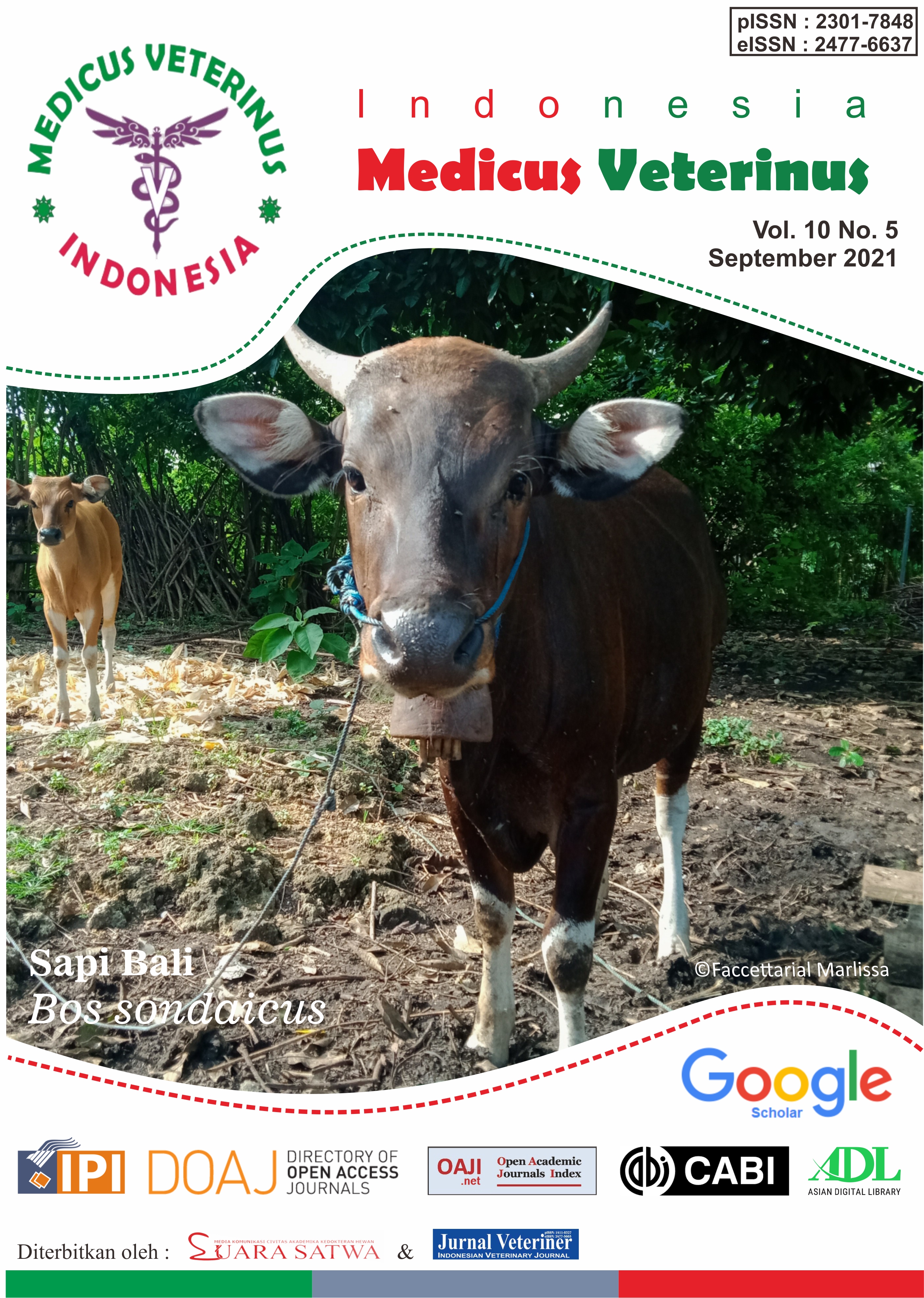Canine and Feline Dirofilariasis Currently Spreads in Indonesia Damaging Pulmonary Arteries and Lungs: A Literature Review
KAJIAN PUSTAKA: DIROFILARIASIS ANJING DAN KUCING KINI MEREBAK DI INDONESIA MERUSAK ARTERI PULMONALIS DAN PARU-PARU
Abstract
Dirofilariasis, caused by Dirofilaria immitis, mostly known as heartworm disease, is an important mosquito-borne nematode zoonosis that naturally infects canids and other species such as cats, ferrets, and humans. There have been reports of heartworm infection from many countries in worldwide. Researchers have reported D. immitis is widely distributed in Southeast Asia because this parasitic zoonosis disease lives in temperate, tropical, and subtropical areas and can be found in colder regions. Therefore, the authors intended to provide an overview of Dirofilariasis cases in Indonesia from a global perspective. The published articles of dirofilariasis were collected and retrieved by an electronic literature search of three databases, including Google Scholar, PubMed, and Science Direct. The literature presented is intended to enhance our current understanding of the overview of D. immitis infection and its prevalence in Indonesia from a global perspective. D. immitis infection can cause caval syndrome in dogs as well as a cardiopulmonary syndrome known as Heartworm-Associated Respiratory Diseases (HARD), which can become fatal as the number of worms infecting the host increases. Whereas in cats, although the number of worms in the host are very few (one to six worms) they can cause pathological changes in the pulmonary arteries which result in a more serious infection than in dogs and endanger life.















